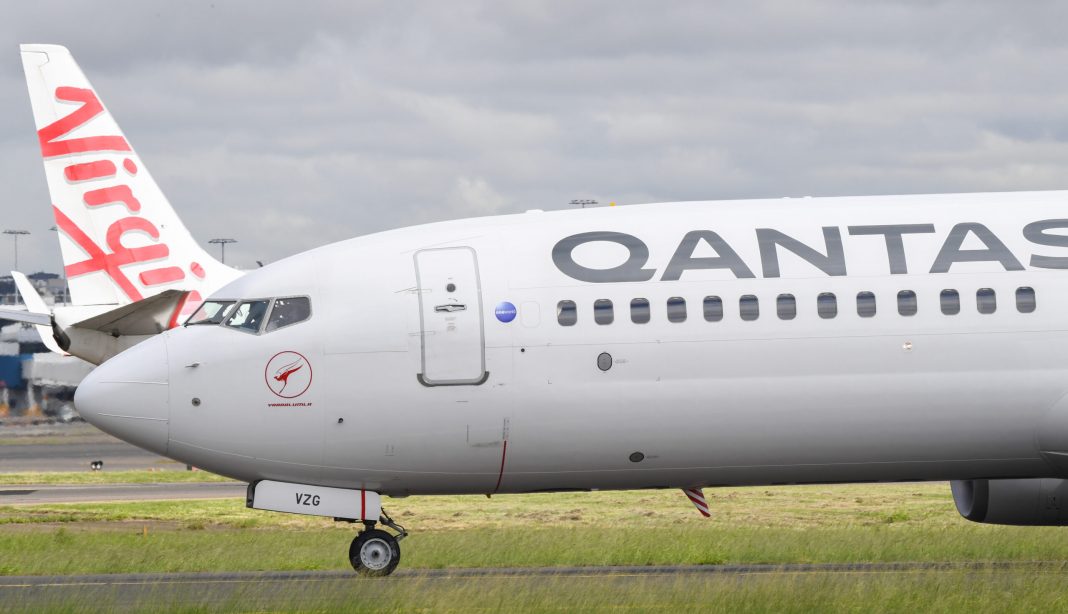With New South Wales announcing it will re-open its border to Victoria later in November, flights between the two state capitals are about to ramp up significantly. Usually, the sector between Melbourne and Sydney is one of the busiest airline routes in the world. But with New South Wales closing their border to neighboring Victoria in July in the wake of a fresh COVID-19 outbreak, flights were reduced to just a handful each day.

Now with Victoria recording its sixth straight day of zero COVID-19 cases, the New South Wales Government has given the thumbs up to the border re-opening. In response, airlines are bringing planes and crews out of a long hiatus.
Both Qantas and Virgin Australia lay on new flights
Between them, Qantas and Jetstar have recently run around 10 return services a week on the route. Virgin Australia operated about half that number. Yesterday, in response to the border decision, Qantas immediately announced a raft of new flights.
“Pre-COVID, Melbourne-Sydney was the busiest air route in Australia and the second busiest in the world. On a busy day, Qantas and Jetstar would operate more than 100 flights per day between New South Wales and Victoria,” said Qantas executive Andrew David.
They won’t quite be back to 100 flights a day just yet, but effective Monday, November 23, Qantas will operate 75 weekly return services on the sector. Low-cost subsidiary Jetstar will operate 42 weekly return services.
The extra flights will see Qantas Group’s overall domestic capacity increase to around 40% of pre-COVID levels. Mr David says the move will see the route retake its mantle as Australia’s busiest, displacing the current titleholder, the Brisbane – Cairns sector.

Virgin Australia’s Kris Taute told Simple Flying today the border re-opening will help restore confidence in the tourism and aviation sectors.
“It is a turning point for the Sydney-Melbourne route,” he said.
“An open border between New South Wales and Victoria allows us to bring more of our team members back to work and gives customers the ability to do business.”
Virgin Australia will step up its flights on the route to four return services a day and further increase frequencies as the Christmas period nears. By then, Virgin Australia anticipates offering more than 20,000 seats per week on the route.
Regional airports get some attention from the airlines
In addition, the airlines are showering some love on regional airports in both states. QantasLink is restarting its popular Dash 8 service on the run between Sydney and Bendigo on December 7, offering five return flights a week.
QantasLink will resume flying between the northwest Victorian city of Mildura and Sydney on November 23, offering four return services a week. With Qantas also starting a brand new service between Mildura and Adelaide shortly, the regional city will soon have direct QantasLink to three capital cities.
Just north of Sydney, Newcastle Airport is getting a boost with Jetstar and Virgin Australia resuming flights between Melbourne and Newcastle. Jetstar will offer 10 return services a week from November 23. Virgin Australia will resume services on the route in mid-December.

This follows the resumption of flights between Newcastle Airport and the Queensland cities of Brisbane and the Gold Coast just days ago.
Virgin Australia is also ramping up services between Melbourne and Canberra in anticipation of that Australian territory following New South Wales’ lead and letting Victorians in. The airline will offer four weekly return services from November 23.
Last but not least, smallish Ballina Airport in far north New South Wales continues to enjoy a bump in Jetstar flights. That airline will resume flying between Melbourne and Ballina from November, offering five return services a week.
Across the three airlines, it amounts to nearly three hundred weekly flights. It represents a significant boost for the airports handling the flights, particularly beleaguered Melbourne Airport. Better still, it means more stood down airline employees getting back to work, more planes in the air, and more people on the move.
[ad_2]
Source link


